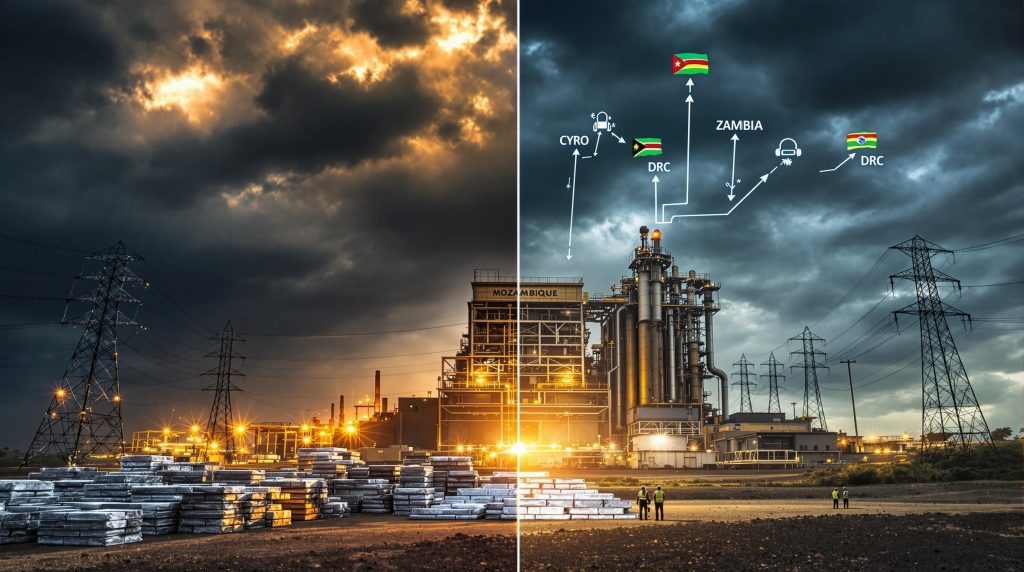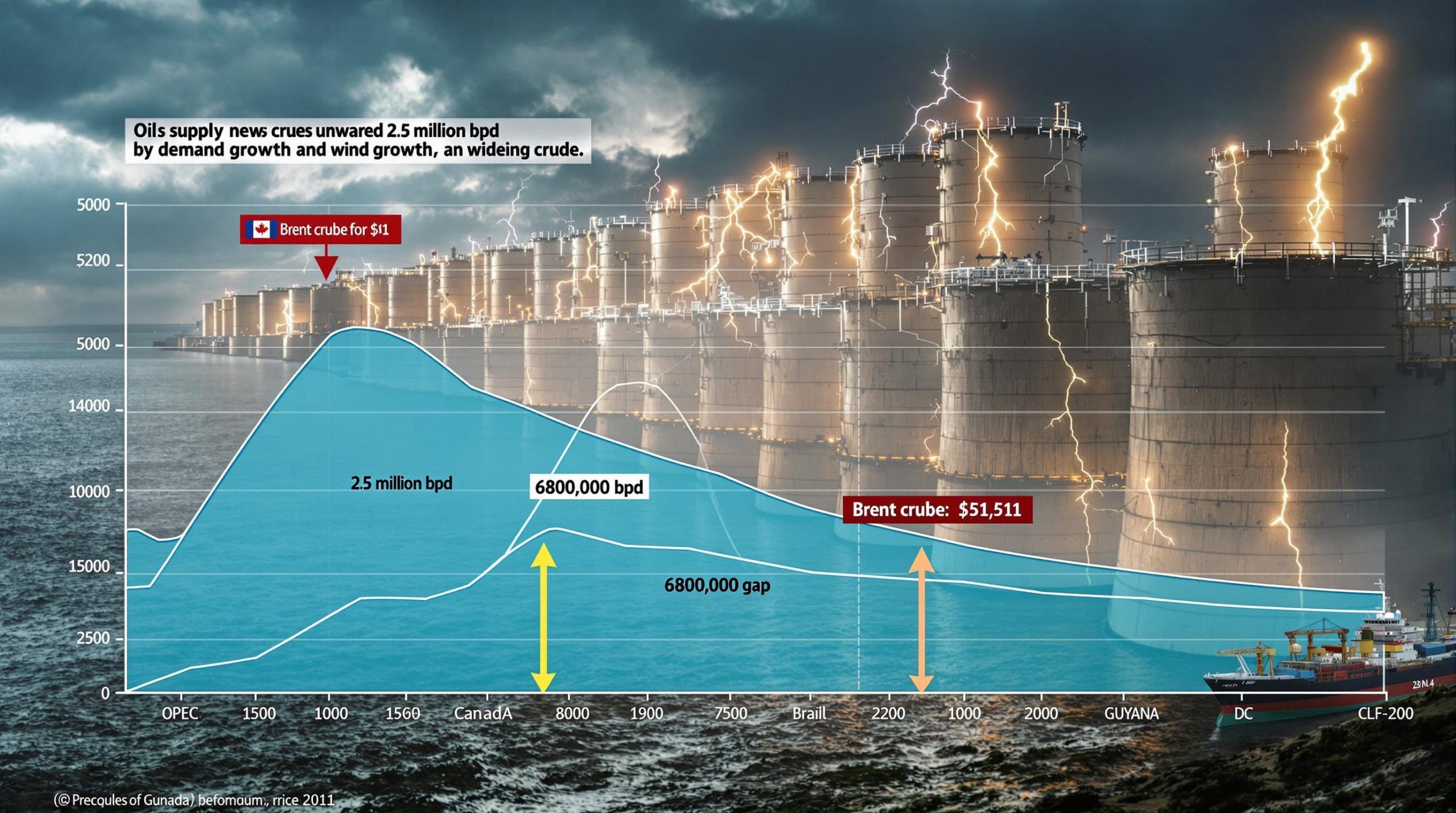Africa's Second-Largest Aluminum Smelter at Risk of Shutdown: Economic and Regional Implications
Mozambique's Mozal aluminum smelter faces an uncertain future as negotiations for a new power supply agreement have reached an impasse. This development threatens not only a critical industrial asset but also carries significant implications for Mozambique's economy and the broader regional power dynamics.
What is Happening to Mozambique's Mozal Aluminum Smelter?
The Mozal aluminum smelter in Mozambique, Africa's second-largest aluminum production facility, is facing potential shutdown by March 2026. South32 Ltd, the operator, has been unable to secure a new electricity supply agreement to replace the current one expiring early next year.
According to Rob Jackson, South32's vice president of supply, "As it stands, negotiations are deadlocked. Given the impasse, the most likely scenario is for Mozal to operate until the end of the current electricity supply agreement and be placed on care and maintenance in March 2026." This stark assessment indicates the severity of the situation facing the facility.
The Financial Fallout
The potential closure has already triggered significant financial consequences for South32. The company has recorded a substantial $372 million write-down in anticipation of the shutdown, causing its share price to drop 6.3% on the Johannesburg Stock Exchange following the announcement.
This significant market reaction reflects investor concerns about the loss of a major production asset in South32's global portfolio and signals how critical the facility is to both the company and the region's industrial landscape.
Power Supply Complexities
At the heart of the dispute is the complex power supply arrangement that has sustained the smelter for decades. The facility currently consumes approximately 950 megawatts of electricity through a triangular arrangement involving South Africa's Eskom Holdings SOC Ltd and Cahora Bassa SA, a state-owned hydropower company in Mozambique.
The inability to negotiate acceptable terms for this power supply represents the primary roadblock to the smelter's continued operation, highlighting the delicate balance between industrial needs and national energy policies.
Why is the Mozal Smelter Important to Mozambique?
Economic Cornerstone
The Mozal smelter represents a critical component of Mozambique's economy, particularly its export sector. In 2024, aluminum was Mozambique's third-largest export, generating $1.1 billion in revenue—with all production coming from the Mozal facility.
This single operation has been instrumental in diversifying Mozambique's export base beyond traditional sectors and providing a stable source of foreign exchange. The potential loss of this revenue stream poses serious challenges for the country's trade balance and economic stability.
Employment and Social Impact
The facility currently employs approximately 2,500 workers and contractors, making it the largest industrial employer in Mozambique. Its closure threatens significant job losses in a country already struggling with high unemployment rates, particularly among youth.
The socioeconomic ripple effects would extend far beyond direct job losses to impact:
- Supporting industries and supply chains
- Local businesses dependent on employee spending
- Community development programs funded by the operation
- Technical skills development in the industrial sector
The concentrated nature of these job losses in a single region would intensify their social impact, potentially creating localized economic distress that could take years to overcome.
What Factors Led to the Current Situation?
Historical Context and Preferential Terms
The smelter's establishment approximately 25 years ago coincided with Mozambique's emergence from a devastating 16-year civil war. During this post-conflict reconstruction period, attracting major industrial investment was a priority for the government.
At that time, South Africa offered some of the world's cheapest electricity, enabling South32's predecessor to secure highly favorable investment terms, including:
- Exemption from income tax
- Minimal royalty payments of just 1% on sales
- Preferential electricity rates
- Other financial incentives typical of post-conflict investment packages
These terms, while successful in establishing the facility, have increasingly come under scrutiny as Mozambique's economic and political landscape has evolved.
Shifting Political Priorities
Mozambique's new government, led by President Daniel Chapo who took office earlier in 2025, has pledged to revise preferential deals like the Mozal agreement when they come up for renegotiation.
This policy shift reflects a broader trend among resource-rich African nations seeking to increase domestic benefits from foreign-operated projects. Governments across the continent are increasingly assertive in demanding that historical agreements struck during periods of economic weakness or political transition be updated to reflect current market conditions and national priorities.
The Mozal situation exemplifies this tension between honoring historical investment agreements and adjusting terms to maximize benefits for the host nation.
What Are the Potential Regional Energy Implications?
Power Redistribution Opportunities
The closure of the Mozal smelter would free up approximately 950 megawatts of electricity—a significant amount of power that could be redirected to other uses. According to Joaquim Ou-Chim, CEO of state-owned Electricidade de Moçambique, this power could potentially be traded regionally, creating new revenue streams for Mozambique.
This reallocation would represent a strategic pivot from using electricity to produce aluminum domestically to exporting the electricity itself as a commodity.
Meeting Regional Demand
Neighboring countries are experiencing significant electricity shortages that create potential markets for Mozambique's excess capacity:
- Copper producers in Zambia face production constraints due to power limitations
- The Democratic Republic of Congo's mining sector regularly contends with energy deficits
- South Africa continues to experience periodic smelter shutdown impact affecting industrial output
- Other Southern African Development Community (SADC) members have growing power needs
These regional power deficits create a ready market for any electricity freed up by the smelter's closure, potentially allowing Mozambique to offset some economic losses through increased power exports.
Electricity as an Export Commodity
Electricity already represents Mozambique's fourth-largest export, valued at $689 million in 2024. The redirection of power currently consumed by Mozal could substantially increase this figure, potentially offsetting some of the economic losses from aluminum production.
However, this transition would require:
- Infrastructure investments in transmission capacity
- New power purchase agreements with neighboring countries
- Regulatory frameworks for increased cross-border electricity trade
- Price negotiations that maximize returns while remaining competitive
The strategic question for Mozambique becomes whether electricity exports can generate comparable economic value to aluminum production when considering the full range of impacts, including employment, skills development, and industrial diversification.
How Does This Situation Compare to Other African Aluminum Operations?
Continental Context for Aluminum Production
The Mozal facility ranks as Africa's second-largest aluminum smelter, highlighting its significance within the continent's industrial landscape. Its potential closure would reshape the global mining landscape and potentially affect global supply chains that source from African producers.
Africa's aluminum sector faces common challenges across multiple operations:
- Energy intensity requiring stable, affordable power supplies
- Competition from lower-cost global producers
- Changing government policies regarding resource nationalism
- Balancing export earnings against domestic industrial development
Similar Challenges Across African Industry
The electricity pricing dispute mirrors challenges faced by other energy-intensive industries across Africa, where historical agreements are increasingly being renegotiated as governments seek to maximize returns from national resources and infrastructure.
Industries such as smelting, refining, and heavy manufacturing are particularly vulnerable to changes in energy policy and pricing, creating tensions between industrial sustainability and national economic priorities throughout the continent.
What Are the Potential Outcomes and Solutions?
Possible Negotiation Scenarios
While current negotiations appear deadlocked, several potential outcomes remain possible:
-
Revised Electricity Pricing Framework: A graduated tariff structure that increases over time, allowing the facility to adapt operations gradually
-
Joint Venture Restructuring: Increased government ownership stake in exchange for more favorable power terms
-
Technological Modernization: Investment in efficiency improvements to reduce power consumption per ton of aluminum produced
-
Partial Operation Model: Reducing production capacity to operate at a scale compatible with higher electricity costs
-
Temporary Suspension: Mothballing the facility temporarily with provisions for restart under more favorable market conditions
Each scenario carries different implications for Mozambique's economy, South32's business interests, and regional industrial dynamics.
Economic Transition Strategies
If closure proceeds, Mozambique may need to develop comprehensive economic transition strategies to:
- Repurpose industrial infrastructure for alternative manufacturing
- Establish retraining programs for affected workers
- Create special economic zones to attract replacement industries
- Develop electricity export agreements that maximize revenue
- Invest in downstream aluminum processing to capture more value from imported raw aluminum
The country might also benefit from exploring South African mineral beneficiation models to capture more value from remaining mineral resources.
Disclaimer: Economic transition following major industrial closures typically requires several years and substantial investment. The full impact of such transitions is difficult to predict with certainty.
What Does This Mean for Global Aluminum Markets?
Supply Chain Implications
The potential loss of production from Africa's second-largest aluminum smelter could impact global aluminum supply chains, particularly for manufacturers and industries that source from the region.
While global markets can typically adjust to supply changes through shifts in production elsewhere, several factors make the Mozal situation noteworthy:
- The facility's strategic location for serving markets in Africa and the Middle East
- The relatively low-carbon footprint of its hydropower-based production
- Its role in regional industrial development and skills transfer
These factors make simple replacement of capacity from other global sources less straightforward than pure production volumes would suggest. In fact, the aluminum industry is experiencing significant industry evolution trends related to sustainability and supply chain resilience.
Price Impact Assessment
While global aluminum markets are influenced by numerous factors beyond a single facility, the potential closure of a significant production center creates market dynamics worth monitoring:
- Short-term price impacts in regional markets most directly served by Mozal
- Possible quality and grade availability issues for specific aluminum products
- Potential shifts in shipping routes and logistics costs for aluminum consumers
- Environmental impact considerations as production potentially shifts to higher-carbon sources
According to recent analysis from Bloomberg, the shutdown could impact prices in targeted markets that rely heavily on African aluminum sources. Market participants throughout the aluminum value chain would be wise to assess their exposure to these potential disruptions and develop contingency plans accordingly.
FAQs About the Mozal Aluminum Smelter Situation
What is the current production capacity of the Mozal smelter?
The Mozal facility is Africa's second-largest aluminum smelter, with significant production capacity that contributes $1.1 billion in export revenue to Mozambique annually. The facility consumes approximately 950 megawatts of electricity for its operations, making it one of the largest industrial power consumers in Southern Africa.
When was the Mozal smelter established?
The smelter began operations approximately 25 years ago (around 2000), shortly after Mozambique emerged from its 16-year civil war. It represented one of the country's first major post-conflict industrial investments and has been a cornerstone of Mozambique's industrial development ever since.
Who currently owns and operates the Mozal smelter?
South32 Ltd currently operates the Mozal aluminum smelter. The company evolved from a predecessor organization that established the original favorable investment terms, including tax exemptions and minimal royalty requirements that are now under scrutiny.
What alternatives does Mozambique have if the smelter closes?
Mozambique could redirect the 950 megawatts of electricity currently used by the smelter to neighboring countries facing power shortages, particularly copper producers in Zambia and the Democratic Republic of Congo. Electricity exports already represent Mozambique's fourth-largest export category at $689 million in 2024, and this figure could increase substantially if the power currently allocated to Mozal becomes available for regional trade.
What percentage of Mozambique's exports does aluminum represent?
Aluminum was Mozambique's third-largest export in 2024, with all production coming from the Mozal facility. The $1.1 billion in aluminum export revenue represents a significant portion of the country's foreign exchange earnings and has been crucial to diversifying Mozambique's export base beyond traditional sectors. Companies in the region are increasingly exploring decarbonisation benefits to maintain competitiveness in global markets.
Disclaimer: This analysis is based on current market conditions and publicly available information as of August 2025. Future developments in electricity markets, aluminum pricing, or political arrangements could significantly alter the trajectory of this situation.
Want to Catch the Next Major Mineral Discovery Before the Market?
Discover why major mineral finds like those mentioned in this article can lead to exceptional investment returns by exploring Discovery Alert's dedicated discoveries page, where our proprietary Discovery IQ model delivers real-time alerts on significant ASX mineral discoveries, giving you a crucial market advantage.




